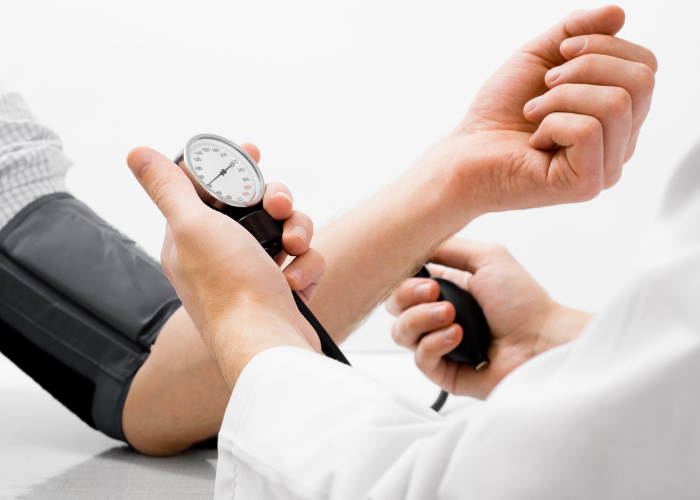
At a Glance :
- Blood pressure is a measure of the pressure with which blood is pumped through the arteries
- Blood pressure changes throughout the day to meet the needs of any given situation, such as rising during times of physical exertion or stress, or lowering during sleep
- Blood pressure is measured by the pressure exerted against the walls of your arteries when the heart pumps blood
- The device used to test blood pressure is called a sphygmomanometer
- Sphygmomanometers measure blood pressure when the heart is contracting (systolic blood pressure) and when the heart is relaxed between beats (diastolic blood pressure)
- Blood pressure is displayed as systolic/diastolic mm Hq - a “normal blood pressure is considered to be 120/80 mm Hg or less.
- Blood pressure at or over 135/85mm Hg is considered high blood pressure (Hypertension)
- Blood pressure of 90/60 mm Hg is considered low blood pressure (Hypotension)
How is Blood Pressure Tested?
Blood pressure is a measure of the pressure with which blood is pumped through the arteries. This is not a static measurement, as blood pressure changes throughout the day to meet the needs of any given situation. Heavy physical exertion normally required more oxygen to be delivered to the limbs so the systolic blood pressure rises at this time. Likewise, blood pressure typically lowers when someone is at rest or asleep.
Blood pressure is measured by the pressure exerted against the walls of your arteries when the heart pumps blood. The tool used to test blood pressure is known as a sphygmomanometer. These devices typically consist of a rubber cuff that wraps around the upper arm which is then inflated. Once the cuff is fully inflated it may be a little uncomfortable, but after a short while it is then slowly deflated.
A sphygmomanometer gives two results for blood pressure:
- Systolic Blood Pressure - this is a measure of your blood pressure when your heart muscle contracts to pump blood.
- Diastolic Blood Pressure - this is a measure of your blood pressure when your heart is between beats. It is basically, the resting tone in your peripheral arteries.
These two readings are shown as systolic followed by diastolic. For example, a “normal” blood pressure is measured at 120 (systolic)/80 (diastolic) mm Hg. This benchmark for normal is quite broad, as some people may have naturally higher or lower blood pressure. Blood pressure readings between 120/80 mm Hg and 135/85 mm Hg (sometimes referred to as high-normal or prehypertension) are typically classified as within a healthy range.
Schedule an appointment with your doctor to get a blood pressure test. The fastest and easiest way to search for and book healthcare appointments online is through MyHealth1st.
When blood pressure is measured outside of a normal range, this may be an indication of high blood pressure (hypertension) or low blood pressure (hypotension) both of which may be indicators of, or risk factors for, a number of potentially serious conditions.
- Hypertension (high blood pressure) - typically classified as any pressure at or above 135/85mm Hg. Hypertension is typically asymptomatic but may lead to serious complications including cardiopulmonary diseases, kidney disease, metabolic syndrome and cognitive issues.
- Hypotension (low blood pressure) - blood pressure at levels below 90/60 mm Hg. Unlike Hypertension, people with hypotension may display a number of symptoms including fatigue, nausea, dizziness and blurred vision.
Stress can cause spikes in blood pressure. As a result, many doctors will test your blood pressure twice during an appointment as it is quite common for people to be stressed, either consciously or unconsciously, by medical tests. A second blood pressure test often shows significantly lower blood pressure than an initial test.
Some medical conditions require careful home monitoring of blood pressure using a home sphygmomanometer. You should only use a machine that has been recommended by your doctor and when testing it’s advised that you sit calmly for at least five minutes and relax before taking your blood pressure and don’t smoke or drink caffeinated beverages within half an hour of testing.
Blood pressure tests are recommended for people of all ages. The more proactive you are about maintaining your health the faster and easier you can deal with any problem that may arise.